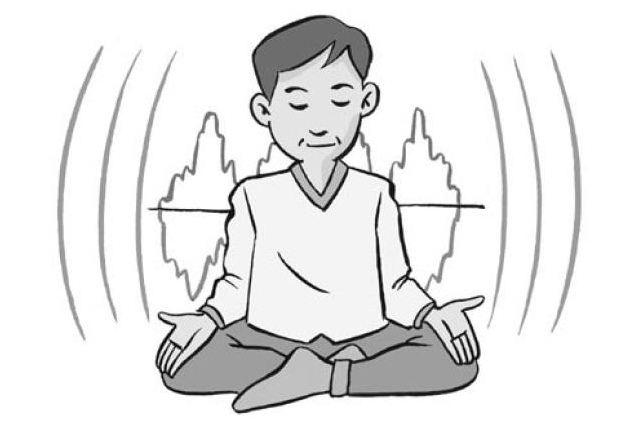Written by Jeonghwa Lee, Choonjae Lee, Published by Korea Institute of Oriental Medicine
J. New Therapies in TKM
1. Wave Therapy – Quantum Medicine
Simply speaking, wave is a type of intrinsic energy below the level of atom, which is the basic element of matters. That is, it is the least unit of energy. All substances are composed of atoms, the smallest particles. In addition, each elementary particle or atom has its specific movement, and a substance composed of such particles or atoms also has its relative specific movement, namely, wave.
The human body is composed of elementary particles atoms molecules cells tissues organs systems the whole body, and components in each level have their specific movement, which is the sum of those below the level. For example, the heart has its own unique movement and the liver has its own unique movement.
If the causes, outbreak and progress of disease are analyzed in the atom level in the future, the diseases will be treated in much more systematic ways. For example, we expect that the directions of treatment will be developed from the atomic level to the molecular level, the cellular level, and upward. In this way, wave therapy utilizes the waves of the human body in Oriental medicine, and is also called quantum medicine.
2. Aromatherapy
Aromatherapy is a natural therapy that treats various symptoms in the human body using essential oil, which is the essence of life force in plants, extracted from the leaves, roots, fruit and petals of plants. Aromatherapy has 5000 years history and is still loved by people throughout the world. Aromatherapy is a compound word of aroma and therapy. It is a form of natural medicine that prevents and treats diseases using herb extracts, preserves health, and furthermore enhances health.
When the therapy, which had been used regularly by royal families and nobles in ancient China and Egypt, was transmitted to Europe, Hippocrates recommended the high healing effect and safety of aromatherapy by saying, The secret of health is in aroma bath, aroma inhalation and aroma massage every day. Aromatherapy not only treats diseases in the body but also eases mental tension.
In addition, it develops immunological competence for resisting stress, which is the source of all kinds of diseases, by strengthening immune functions in the body. Recently, with the finding of the side effects of physiotherapy and chemicals, aromatherapy is being researched as new alternative medicine and producing many notable results in advanced countries. It is also used frequently in everyday life.
In Korea, aromatherapy was introduced and began to be applied to patient treatment in 1996 by The Society of Oriental Medicine Natural Therapies organized by TKM practitioners. Since then, aromatherapy has been settled in people s life and its effects have been known widely.
However, aromatherapy is not a newly emerging therapy but its history traces back to the ages before Christ. Mummies discovered recently suggest that Egypt used many kinds of refined oil even from 4,500 B.C. In particular, there are records found in aristocrats tombs showing that aromatic substances were used to prevent the decay of corpses. According to a record retrieved in 1922 from Tutankhamen’s Tomb, aromatherapy was used in ancient Egypt.
These records suggest that Egyptians utilized the effect and fragrance of aromatic substances actively for religious, medical and cosmetic purposes.
Entering the 20th century, French chemist Rene Batteferre proved the absorption path of refined oil in the human body. In addition, during the 2nd World War, surgeon Jean Valnet verified the medical characteristics of aromatherapy. He used refined oil particularly to treat burns and wounds.
These days, research institutes in Western countries are making various scientific approaches, and clinical reports have been published for various symptoms.
3. Taping Therapy
Taping therapy facilitates the flow of qi and blood by applying tape to specific muscles, meridians and collaterals, and acupoints and stimulating them through the tape. It also treats diseases by restoring the balance of the body through curing strained or slackened muscles and ligaments without using medicine.
4. External Therapies
External therapies are largely divided into eight methods – diaphoresis, emesis, purgation, mediation, warming, clearing, tonification and resolution. These therapies are used separately or jointly in various ways. They also use externally applied medicines for dermatologic disease, musculoskeletal diseases, respiratory diseases, gynecologic diseases, digestive diseases, paralytic diseases, etc.

































